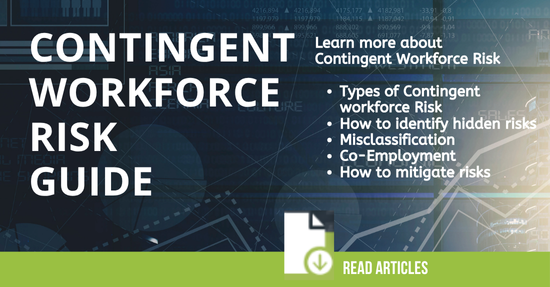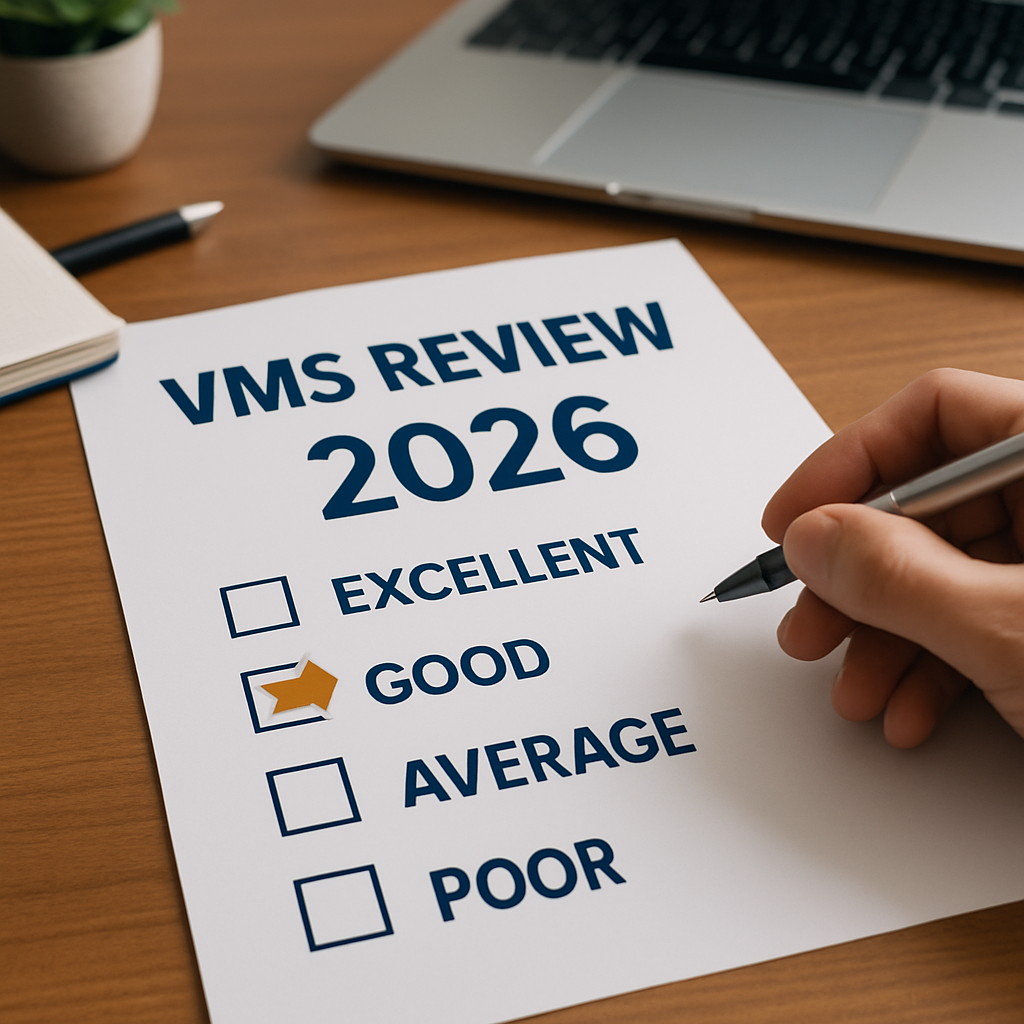All businesses encounter risks within their operations. Typically, effective management strategies and internal processes are put in place to minimize these risks. This article explores the primary risks linked to managing a contingent workforce and strategies to address them.
Effectively managing contingent workforce staffing is vital. To reduce risk and achieve genuine ROI from your contingent workforce, it is crucial for your business to efficiently oversee both the contingent workers and the staffing agencies that supply them.
Let’s start with a look at the top five contingent workforce risks:
#1 - Lack of Transparency into your Contingent Workforce
Without an effective contingent workforce management program, your business probably lacks visibility into its contingent workforce. This absence of transparency means you have no insight into unauthorized spending, as hiring managers may independently source and hire contingent workers without adhering to necessary screening, quality control, preferred contractual terms, and predetermined rates outlined in your vendor agreements.
#2 - Lack of Visibility into Vendor Performance
Without a robust contingent workforce management program, your business likely lacks clear visibility into its contingent workforce. This lack of transparency means you are unaware of unauthorized spending, as hiring managers might independently recruit contingent workers without following essential screening, quality control, preferred contractual terms, and predetermined rates specified in your vendor agreements.
#3 - Misclassification or Co-Employment
When engaging contingent workers, their relationship with your business and your staffing agency must be properly defined and recorded. Incorrectly identifying the relationship that exists between your business and the contingent worker could lead to misclassification or co-employment risk. This would result in hefty fines, back taxes and penalties for your business.
#4 - Security Risks
Your contingent workforce program must implement procedures to effectively engage, manage, onboard, and offboard contingent workers. Lacking these procedures exposes your organization to risks such as the loss of intellectual property, trade secrets, competitive data, and potential security threats to your network. It is essential to thoroughly vet all contingent workers before they join your organization.
# 5 - Financial Risks
Leveraging a contingent workforce can significantly benefit your business by enabling you to achieve workforce objectives more quickly and cost-effectively. However, without proper oversight and control, financial risks may arise. Insufficient visibility into your contingent workforce can obscure your financial liabilities, leading to potential overpayment for talent and excessive charges from staffing vendors.
How to Manage Contingent Workforce Risk
Creating a contingent workforce program can be challenging, and attempting it without the appropriate processes and technologies will lead to disorder. Without a centralized strategy for managing your contingent workforce, your business is exposed to numerous risks.
Companies that rely on manual spreadsheets to manage their contingent workforce face significant risks affecting their financial performance because they lack the necessary visibility and control over their program.
Insufficient visibility and control contribute to contingent workforce risks. Vendor performance quality declines, unapproved costs spread throughout the organization, and there is a danger of misclassifying or co-employing contingent workers. Additionally, hiring managers may act independently, spending beyond the agreed-upon rates and contractual terms with your vendors.
How a VMS Mitigates Risk
VMS software will centralize your contingent workforce data in one location, and automate the processes associated with managing both your contingent workers and staffing agencies.
Contingent workforce recruiting technology will help your business monitor and track vendors and their performance, gain complete visibility of your workforce, automate the end-to-end processes of managing your contingent workers and staffing agencies, ensure contingent workforce compliance and consolidate your vendors (and program) into one centralized location.
Learn more about the benefits of a VMS
Learn more about the Benefits of a VMS and what to look for when choosing the best VMS for your organization. Download our Free VMS Buyer's Guide here:
Discover the Power of Conexis VMS
Conexis VMS is purpose-built for organizations seeking to manage their contingent labor spend effectively. Here’s why we're the right choice:
- Fast Deployment: Get up and running in weeks, not months
- Transparent Pricing: Flexible pricing with no hidden costs
- White-Label Ready: Customize the platform with your brand
- Real-Time Insights: Make faster decisions with built-in analytics
- Audit-Ready Compliance: Store contracts, worker data, and rates in one secure hub
About Conexis VMS
Conexis is an award-winning Vendor Management System built for organizations that want the power of enterprise software without the complexity or cost.
Leveraging the latest technology, Conexis delivers the expertise, reliability and security of enterprise systems, while offering the flexibility, user friendliness and tailored, personal service you require. Learn more about our Company and why organizations Choose Conexis VMS.
Looking to Switch Your VMS or Just Getting Started?
Whether you are looking to Switch your VMS, or just Getting Started, we are here to help. Contact Us for a Free No-Obligation Consultation, See how Easy Conexis is to use by taking a quick 2 minute Self-Guided Online Demo, or Book a Personal Demo Today!
Learn More about Contingent Workforce Management
- Contingent Workforce Management Guide 2025
- Contingent Workforce Best Practices 2025
- Contingent Workforce Stats you need to know 2025
- Cost Savings: How you can save 20% on your contingent workforce costs
- Reducing Risk: 5 Ways to reduce contingent workforce risk with a VMS
- Improving Compliance: 10 Ways a VMS helps improve contingent workforce compliance
- Managing Shift-Workers: 5 Ways a VMS helps you manage shift-based workers
- Improving Invoicing: 5 Ways a VMS streamlines and improves invoicing
- Increasing Visibility: 5 ways a VMS gives you visibility into your contingent workforce program
- Measuring Staffing Agency Performance: How a VMS improves staffing agency performance
- Reducing Turnover: 5 Tips to Reduce Turnover in Your Contingent Workforce Program
- KPIs: 4 Key Metrics That Will Improve Your Temporary Workforce Management Program
Additional articles on the Managing Contingent Workforce Risk: Managing Risk Guide
- Co-Employment Risk: How a VMS Shields you from Risk
- Misclassification: A Critical Risk for Contingent Workforce Programs
- 10 Ways a VMS helps reduce Contingent Workforce Compliance
- How to Identify the Hidden Risks in Your Contingent Workforce Program
- How to Track Contingent Workforce Compliance Risk with a VMS
- What is Contingent Workforce Compliance Risk?
- Is your Staffing Agency putting your company at risk?
- The Benefits and Risks of Hiring Contingent Workers
- The Top 5 Contingent Workforce Risks and How to Manage them
- How a VMS keeps you compliant and audit-ready








